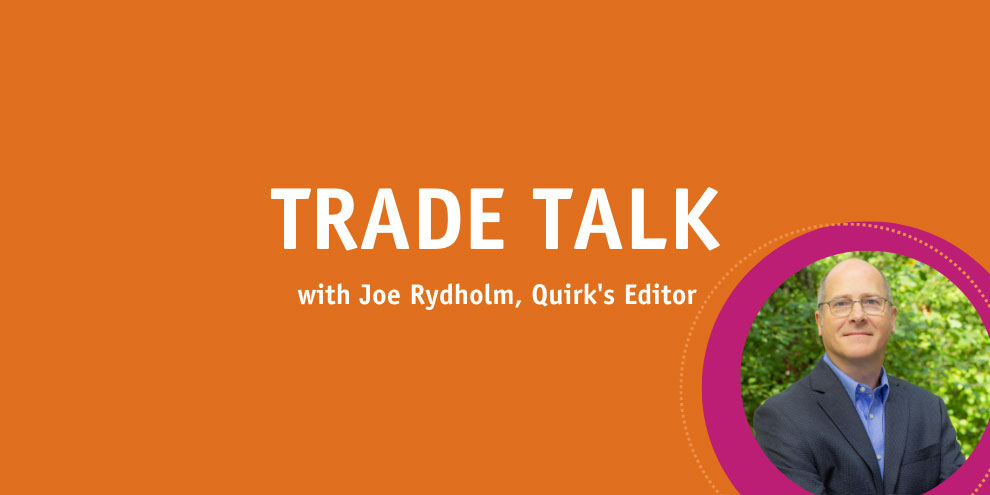I feel like the pandemic has almost rendered moot any attempt to predict the future, especially in the business world. One new variant and the markets go crazy and the world shifts on its axis – at least for a while. (That’s an aspect of the stock market that’s always confused me, by the way. The experts chide individual investors to keep a cool head and never react with emotion and yet why does it always seem like it’s the pros who freak out and dump their holdings at the first hint of bad news?)
I digress.
With the above caveat about the merits of crystal ball-gazing in mind, I’ve been reading a ton of the forward-looking content that typically comes out around the start of a new year. Forrester’s Predictions 2022 report (available free at the firm’s website; registration required) has a handful that stuck out to me as being more reasonably possible, courtesy of being informed by Forrester’s broad business purview. (The titles below are mine; Forrester’s are way more professional-sounding.)
Get over yourselves and meet our needs. Forrester says that while consumers are still willing to cut companies some pandemic-related slack, many feel that businesses should have things squared away by now and will grow increasingly impatient with firms that struggle to go fully digital.
“[C]onsumers also expect companies to double down on building a successful and sustainable digital customer experience. Fifty-six percent of U.S. consumers believe that companies should have figured out how to handle pandemic-related disruption by now. Fifty-eight percent of consumers expect companies to have marshalled their digital resources so they’ll be able to respond better if the country is plunged into another public health emergency.”
B2B you and me. While B2B firms know that customer insights are key to an effective sales process, Forrester predicts that 75% of efforts to create automated, personalized engagement won’t meet ROI goals because of inadequate buyer insight.
“Seventeen percent of B2B buyers said that the competence demonstrated during the buying process was the most significant driver of purchase choice, far ahead of the relationship with the sales rep (5%) or customer references (6%).”
And yet, the company says, “…only 10% of B2B organizations will identify metrics to measure the value created for buyers during the buying process.”
We got this. Instead of depending on (read: waiting for) governments to act on issues related to environmental, social and corporate governance, companies will take it upon themselves to tackle problems, with more substantive rather than merely performative measures, since they know consumers are watching.
“Forrester Analytics Consumer Technographics Benchmark Survey, 2021, shows that year over year, more adults in the U.S., Canada, the U.K., Germany, Spain and Italy regularly purchase from brands that align with their personal values. The highest jump occurred in the U.S., with a rise from 40% in 2020 to 48% in 2021. This number will surpass 50% in 2022 – spurring brands to take actions like never before.”
Accessibility pays. With a share of a predicted $10 billion in spending on accessibility in the U.S. and Canada at stake, CX groups within tech firms will have to boost their focus on areas like accessibility and privacy.
“More organizations buying tech will commit to accessibility in 2022, due to pressure created by the increasing number of digital accessibility lawsuits and the increasing number of firms creating diversity and inclusion programs (26% did for the first time in 2021). Tech vendors and services firms will need to follow suit and make similar commitments if they want a piece of the $10 billion pie.”
Don’t blame the (hybrid) messenger. While companies will talk a good game about supporting a hybrid work model, their actions will speak otherwise – and contribute to failure.
“Leaders will claim support for a hybrid model but still design meetings, job roles and promotion opportunities around face-to-face experiences. When it’s clear that productivity is suffering, these same execs will blame hybrid work rather than looking in the mirror at the real culprit. A smaller number of failures will come from the 30% of companies that insist on a fully in-office model, only to find that employees simply won’t have it. Attrition at these firms will rise above their industry averages – monthly quit rates will rise to as high as 2.5% for as much of 2022 as needed until executives feel the pain and finally commit to making hybrid work ... work.”
